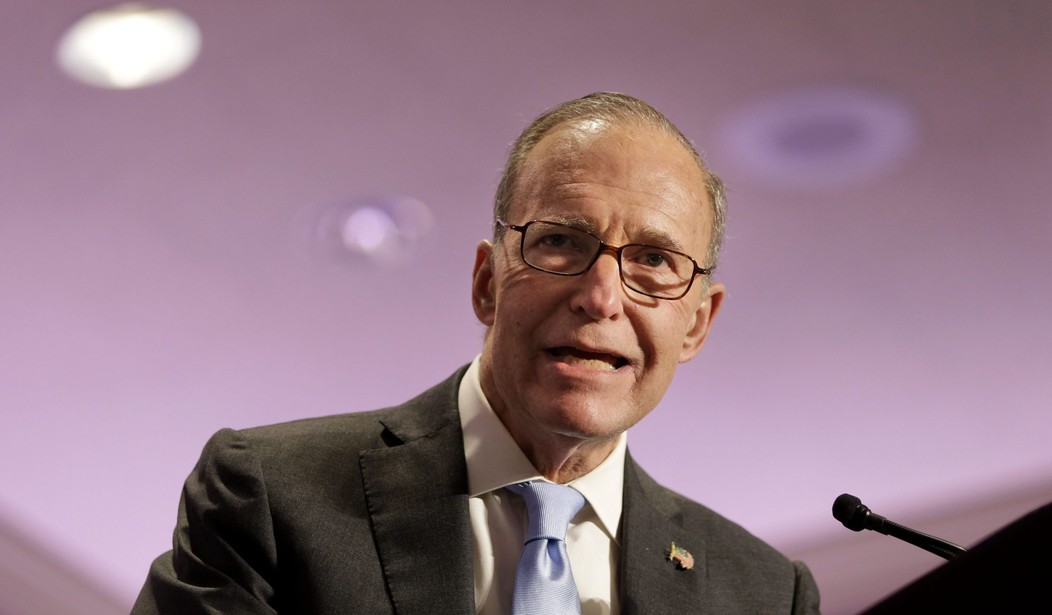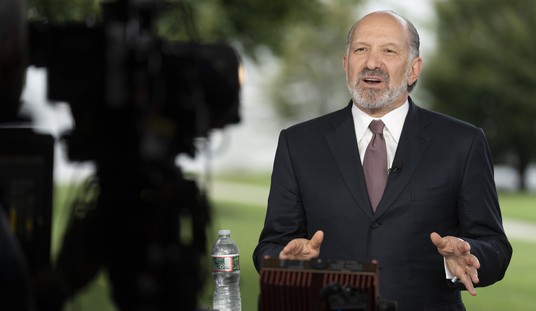Cross-posted from Asia Times.
Dear Larry:
China threatens American preeminence and President Trump is right to worry about it. But you’re going about it the wrong way, and your approach will produce results very different from what you expect or want.
When you say: “I do not think President Xi has any intention of following through on any of the discussions we’ve made and I think the President is so satisfied with China on these so-called talks that he is keeping the pressure on and I support that,” Beijing hears: “We can hurt China’s economy so badly by reducing exports to the US that internal political pressure will force President Xi to capitulate.”
This is a very big mistake, for two reasons. The first is that you do not negotiate with China by trying to make its leader lose face.

Asia, moreover, provided the biggest growth margin in China’s exports.

Where are you going to impose tariffs on US imports from China? Americans don’t want to pay higher prices for smartphones, or computers, or display screens, or the other cheap consumer electronics that make the tech boom in American equities possible in the first place.

The vast majority of China’s exports to the US are consumer goods, especially electronics. Most of these goods are assembled in China from imported components. China adds only a third or so the value added to these goods. China has a chronic labor shortage and is shifting low-paid assembly to lower-wage countries in Asia. If you tax consumer goods from China, American consumers will pay more, and the Chinese will accelerate the shift of low-wage employment to the new economic zone they are building in Asia through the $1 trillion One Belt, One Road program.
This transition has been underway for years. Here’s a 2013 chart that I published in a presentation for Reorient Group (now Yunfeng Financial), a Hong Kong investment bank where I was a managing director.

In short, tariffs on consumer goods only will throw Br’er Xi into the briar patch. You’re ten years late and $1 trillion short.
China cheats, China plays dirty, China steals technology, China muscles American companies in joint venture, China does every manner of bad thing. But that’s not the big problem. Don’t worry about the “crown jewels” of American technology, as you said today on CNBC. Those are the old crown jewels. The new crown jewels are coming out of Chinese laboratories.
In 2002, China’s biggest telecom equipment company, Huawei, was caught red-handed with Cisco code, bugs and all. Now Huawei spends more on R&D than Microsoft. It employs thousands of European engineers as well as tens of thousands of Chinese. American graduate programs in math and physics are in trouble because Chinese (and other foreign students) have stopped applying (foreign students now comprise about four-fifths of the graduate students in key STEM faculties). The Chinese aren’t coming to the US anymore because they don’t have to: They can get as good an education in cutting-edge technology at home. If we have lost our edge at the university level, how long will our edge last at the corporate level? There’s virtually no venture capital money going into anything to do with physics. It’s all software.
There’s a bigger issue here, and that’s the failure of American observers to anticipate China’s emergence as the world’s most powerful economy. We couldn’t believe that a state-run economy directed by a Communist Party could succeed. Back in 2001 Gordon Chang published the first edition of his book The Coming Collapse of China. Since then per capital GDP in China has quintupled. In 2015 the whole economics profession thought that China was entering a financial crisis as its reserves fell by $1 trillion—except for the Bank for International Settlements, which explained that Chinese companies repaid $1 trillion of foreign debt with those reserves. China is still growing at 6%-7% a year, which means that its economy doubles in size every decade.
Unlike all the so-called emerging markets of the world—Brazil, Mexico, Turkey, India and so forth—China moved its people from subsistence agriculture to urban employment. 600 million people—the equivalent of two Americas—moved from country to city in the last 35 years. And over that period per capita GDP in China has risen by 45 times – that’s 4,500%.

It’s misleading to speak of a “Chinese model.” This is the Asian model, invented by the Japanese after the restoration of the Emperor Meiji in 1868. By 1905, Japan was able to beat Russia on land and sea; by 1939, it designed and built the world’s best fighter plane, the Mitsubishi Zero. Japan gave us a run for our money in 1941. Of course, Japan’s population was half that of the United States, not to mention our British and other allies. China has four times our population.
The United States is absolutely right to restrict Chinese access to US technology. I have proposed even more stringent measures, for example, 100% US content for any high-tech goods bought by the military. That just buys a little more time. We need to worry less about what technology China may have stolen in the past, and more about what kind of technology it may invent in the future. If China leaps ahead of us in quantum computing—which it is trying hard to do—they will secure an advantage as big as America’s advantage in semiconductors during the 1970s and 1980s. That will be game over.
Don’t hope for a coalition of the willing against China. Europe has already taken the opportunity to cut deals with China behind our backs. Last week, Germany’s top manufacturing companies — Volkswagen, BMW, Daimler, BASF and Siemens — announced tens of billions of dollars of new investments in China as Chinese Premier Li Keqiang posed for a photo op with German Chancellor Merkel in Berlin. BMW will expand its joint venture with Brilliance Auto to produce 519,000 vehicles a year. It also set up a joint venture to produce an electric version of the Mini together with Great Wall Auto. And it agreed to buy $4.7 billion worth of batteries from Chinese producer CATL, which just announced a new plant in southern Germany. Volkswagen earlier this year announced that it would invest $18 billion in China by 2022 and construct six plants to build electric vehicles.
America now has 91 cars for every 100 people. China has 15 cars for every 100 people, and it has four times as many people. Do the math: If China rises to the car ownership level of South Korea (46 cars per 100 people), it will have to produce or import roughly 400 million cars to reach that level. China already is the world’s biggest auto market (GM sells more cars there in the US), and the Germans just got the inside track.
Meanwhile, Europe and Japan have signed the Japan-European Free Trade Agreement, in what Germany’s Der Spiegel calls a “warning” to the US.
The world isn’t lining up with us. It’s lining up against the US. China and its One Belt, One Road economic sphere—stretching from Turkey to the Philippines—represents the world’s fastest-growing consumer market. China will open its market selectively, bribing our erstwhile friends and allies. It might take a minor hit to growth (between 0.5% and 1% of GDP growth per year, according to most estimates), but it will survive a trade war with the US with an expanded Asian market.
The Chinese dragon does have a point of vulnerability, and that is innovation. During the 1960s and 1970s, the United States invented CMOS chip manufacturing, LED screens, the semiconductor laser, and the whole array of technologies that created the digital age. We have made marginal improvements on these technologies but haven’t invented anything really new for half a century.
I’ll repeat what Dr. Henry Kressel and I proposed in the Wall Street Journal right after Trump was elected:
First, encourage innovation, which is the precondition for economic growth. The U.S. can’t bring back most of the jobs it has lost, but Americans can create new and better ones. It goes without saying that Washington should aggressively defend intellectual property rights and enforce anti-dumping laws. But that isn’t enough.
Although private investors should take all the risks in commercializing new technology, federal R&D support is key. The civilian spinoffs of defense research gave us many of the new products of the past 30 years. Yet federal R&D spending as a share of the economy has fallen almost in half, to 0.73% of GDP in 2013 from 1.2% in 1987, at the peak of Reagan’s Strategic Defense Initiative. The next administration should raise R&D spending back to 1.2% of GDP by 2018.
Second, ensure that the resulting innovation turns into American jobs. High-tech is capital intensive, and modern manufacturing is expensive. But CEOs have learned that the market rewards companies that are light on capital investment and big on share buybacks. To change this behavior, lawmakers could give companies tax incentives to invest in capital assets in the U.S.
Washington should also enforce strict U.S. content rules for sensitive defense technology. Many of the Pentagon’s military systems depend on imported components. That’s a concern on security grounds alone. Procurement rules should be changed to require that critical components be manufactured in the U.S….
When Russia took a lead in the space race with the 1957 launch of Sputnik, the U.S. responded with aggressive support for science and engineering education. That helped make America the world’s leader in innovation. This should be a Sputnik moment. High schools could offer intensive training in science, technology and math. The U.S. should develop—with local, state and federal support—technical institutes on the German model to channel students into corporate internships and, ultimately, well-paid industrial jobs. Americans are at a turning point. They can either resign themselves to decline or revive their country’s industrial pre-eminence.
Your friend,
Dave










Join the conversation as a VIP Member